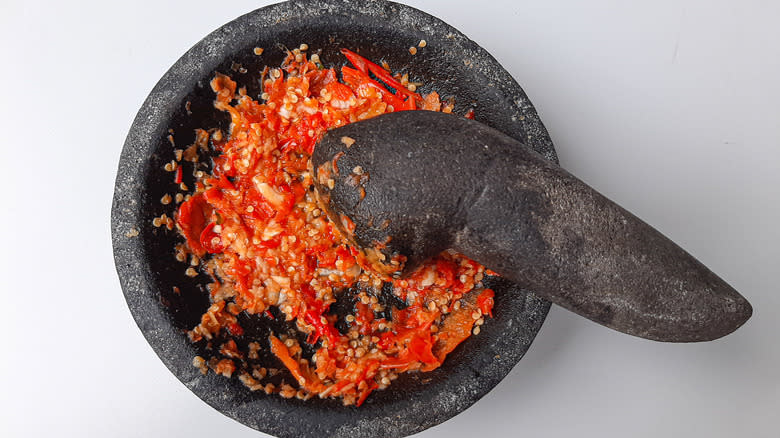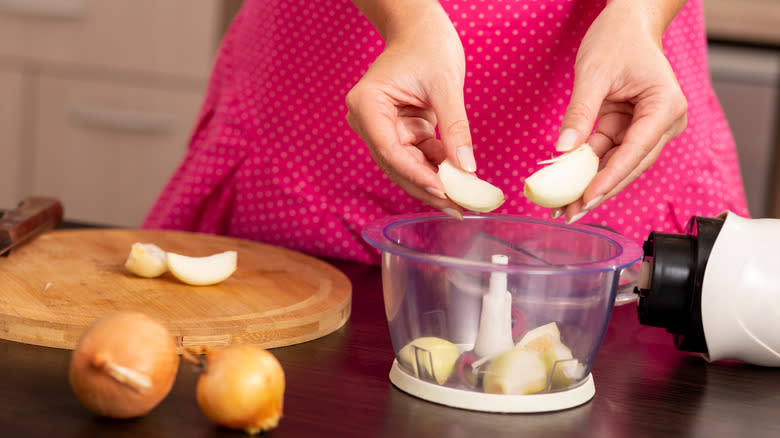Rempah Is The Malaysian Cooking Method That Makes Prep Work A Breeze

Cooking is a passionate and even artistic endeavor for avid home cooks and culinary professionals, but prep work is probably not high up on the list of things they love about it. Chopping veggies and aromatics and assembling spice mixtures or marinades is a crucial yet tedious step toward delicious meals. Malaysian culinary traditions have ingeniously engineered a method called rempah to transform odious prep work into a quick and efficient task.
Meaning "spices" in Malay, rempah refers to the quick meal prep technique of mashing numerous spices and aromatics together to create the foundational paste that belies most dishes, from fish and meat to stews and soups. Malaysian spice mixtures consist of aromatics, chilis, and dried spices that vary depending on the dish in question, but most contain garlic, shallots, and chilis. Mashing the ingredients with a mortar and pestle effectively releases the fragrance and tasting notes of each ingredient while also thoroughly melding the flavors into a well-balanced mixture.
Once mashed into a raw paste, rempah is then fried in oil to rid it of excess water, bloom the raw flavors into rich caramelized versions of themselves, and provide an infused oil to coat the meat or vegetable you'll cook it with. Not only does rempah remove the tedious tasks of chopping or dicing, but it's a one-bowl recipe that also saves you the hassle of dirtying various containers. Furthermore, you can employ this efficient prep method for any spice or seasoning recipe, whether it's Malaysian or not.
Read more: 15 Best Knife Brands, Ranked
Traditional And Modern Rempah Techniques And Ingredients

The tools traditionally used to mash rempah are a mortar and pestle, which, despite their antiquity, remain the ideal tools for the job. Manually mashing is the most successful method because it does the best job at completely breaking down each spice, herb, and aromatic's cell walls, allowing them to reach their full flavor potential. If you don't have a mortar and pestle, you can place all of the ingredients in a plastic Ziploc bag and use a rolling pin to mash it all together. In a pinch, a coffee mug will do.
Of course, you can always save yourself the muscle work of manually mashing with the help of modern kitchen appliances, like a food processor or a high-quality blender. Pulsing spices and aromatics in a food processor will chop and emulsify them in a matter of seconds. Plus, the absence of oil or other fats means a quick clean-up of your appliance's receptacle.
Malay rempah ingredients feature native spices and flavors like turmeric, lemongrass, galangal, ginger, candlenuts, and tamarind, but you can mash or pulse any foundational seasonings you have in mind, from a mirepoix to Mexican salsa macha to Chinese chili crisp. It would work wonderfully for curry pastes and aromatic soup bases like the onion, ginger, garlic, galangal, and lemongrass mixture used in Thai Tom Ka soup.
Read the original article on Tasting Table.

